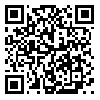2- University of Tehran
3- Iran University
4- university of social welfare and rehabilitation sciences
Crossed aphasia in dextral (CAD) refers to aphasia occurring after right brain damage in dextral persons. CAD is a rare phenomenon in the world and there has not been any report of crossed aphasia in Persian, that is why we measured to report a Persian patient with crossed aphasia and this is a first report of incidence of CA in Persian. In this case report study, we offered a complete report of a 31-year-oldright handed man with right hemisphere lesion who experienced aphasia after his brain injury. We assessed the patient with Persian version of Bilingual Aphasia Test (BAT), Test of Anomia and Apraxia. In addition, more than 100 utterances of connected speech were gathered and analyzed. According to the results of anomia and apraxia tests, he was at normal level in both of them, but he couldn’t get complete score in BAT, the worst score was achieved in making sentence subtest of BAT. He also had deficits in the syntactic comprehension, grammaticality judgments, lexical decision, verbal fluency and reading comprehension subtests of BAT. Linguistic analysis of his connected speech indicated low speech rate and deficit in using prepositions, compound nouns and verbs. The results confirmed the existence of aphasia and incoherent and non-cohesive speech. The reason of the latter could be deficit in using complex sentences and discourse marker (grammatical problems) and circumlocution, deficit in topic maintenance , using pronoun ambiguouslyand selecting inappropriate words for convey meaning (pragmatic problems related to right hemisphere problem) .In sum, this patient showed combination of aphasia, agrammatism, and right hemisphere damage( pragmatic deficit) together.
Received: 27/04/2011 | Accepted: 28/07/2012 | Published: 15/10/2015
| Rights and permissions | |
 |
This work is licensed under a Creative Commons Attribution-NonCommercial 4.0 International License. |


